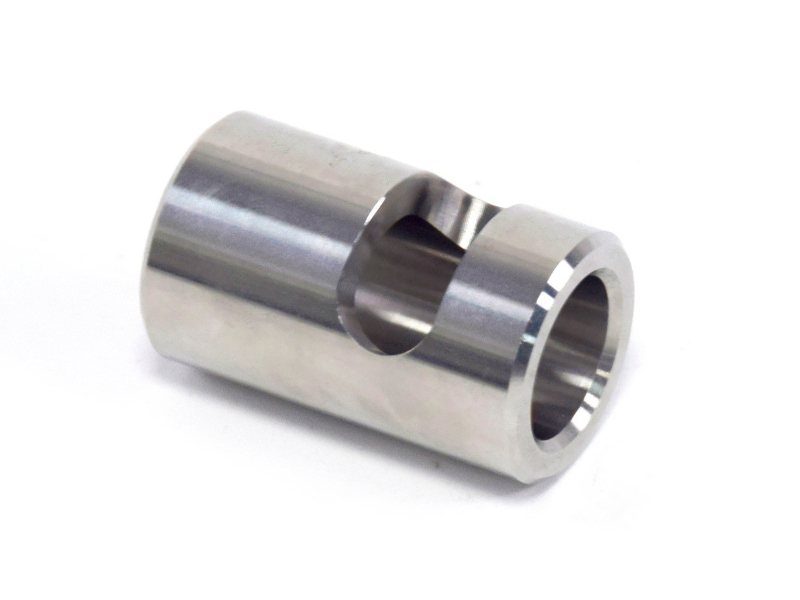High-Precision CNC Milling for Industrial Equipment Components in Automation Systems
Introduction
The Automation Systems industry depends on highly precise components to ensure seamless operations, minimal downtime, and consistent productivity. Industrial equipment within automation requires exact dimensional tolerances, superior durability, and exceptional reliability to function effectively within complex robotic systems, conveyors, actuators, and control mechanisms.
Advanced CNC milling services offer the manufacturing accuracy needed to produce these intricate industrial components. CNC milling provides repeatable precision, tight tolerances, and flexibility to accommodate sophisticated designs crucial to automation equipment performance.
Industrial Component Materials
Material Performance Comparison
Material | Tensile Strength (MPa) | Yield Strength (MPa) | Hardness (HRC) | Typical Applications | Advantage |
|---|---|---|---|---|---|
505-700 | 215-250 | 25-35 | Conveyor rollers, sensor brackets | Excellent corrosion resistance, good strength | |
310-350 | 275-310 | 40-50 HB | Robotic arm mounts, actuator housings | Lightweight, high strength-to-weight ratio | |
620-850 | 450-585 | 22-32 | Heavy-load equipment components, shafts | Excellent machinability, good mechanical strength | |
345-400 | 125-165 | 60-80 HB | Precision fittings, connectors | Superior machinability, excellent conductivity |
Material Selection Strategy
Material choice for industrial equipment in automation depends on specific performance requirements:
For corrosion-resistant and clean-environment components: choose Stainless Steel SUS304 for robust corrosion protection.
For lightweight structural parts that reduce inertia: use Aluminum 6061-T6 to maintain strength with minimal weight.
High-strength load-bearing components: Carbon Steel 1045 is preferred for withstanding heavy mechanical loads effectively.
For electrical connectors and precision fittings: select Brass C360 for optimal machinability and conductivity.
CNC Milling Processes
Process Performance Comparison
CNC Milling Technology | Dimensional Accuracy (mm) | Surface Roughness (Ra μm) | Complexity Level | Typical Applications | Key Advantages |
|---|---|---|---|---|---|
±0.02 | 1.6-3.2 | Medium | Basic equipment mounts, standard brackets | Cost-effective, high-volume production capability | |
±0.015 | 0.8-1.6 | High | Multi-side machined components, detailed brackets | Increased accuracy, fewer setups | |
±0.005 | 0.4-0.8 | Very High | Complex robotic joints, precise control mechanisms | Exceptional precision, minimal secondary processes | |
±0.005-0.015 | 0.6-1.2 | Very High | Precision actuators, sensor housings | Consistent high accuracy, specialized precision tooling |
Process Selection Strategy
Selecting CNC milling technology depends on complexity and precision:
General structural and simpler shapes: 3-axis CNC milling ensures cost-effective, reliable machining.
Components requiring multiple-precision operations: choose 4-axis CNC milling to reduce production time and enhance accuracy.
Highly complex precision parts: opt for 5-axis CNC milling to achieve tight tolerances and superior surface quality.
Critical precision automation parts: utilize specialized Precision Machining Services for accuracy, repeatability, and reliability.
Surface Treatment
Surface Treatment Performance
Treatment Method | Corrosion Resistance | Wear Resistance | Temperature Stability (°C) | Typical Applications | Key Features |
|---|---|---|---|---|---|
Excellent (≥500 hrs ASTM B117) | Moderate | Up to 350 | Robotic arm components, actuator bodies | Enhanced surface hardness, corrosion-resistant oxide layer | |
Good (≥100 hrs ASTM B117) | Moderate | Up to 250 | Shafts, brackets, equipment mounts | Attractive matte finish, minimal dimensional change | |
Superior (≥1000 hrs ASTM B117) | High (HV600-750 hardness) | Up to 400 | Wear-critical parts, sensor fixtures | Excellent uniformity, superior corrosion and wear resistance | |
Excellent (≥500 hrs ASTM B117) | Moderate-High | Up to 200 | Housing panels, protective casings | Durable finish, extensive color options |
Surface Treatment Selection
Surface treatment choices depend on operational needs:
Robust corrosion resistance and hardness: Apply electroless Nickel Plating to ensure longevity and durability.
Components requiring attractive, corrosion-resistant finishes: use Anodizing for aluminum-based automation equipment.
Cost-effective aesthetic protection: choose Powder Coating for durable and visually appealing surfaces.
Moderate corrosion protection and appealing finish on steel components: select Black Oxide Coating.
Quality Control
Quality Control Procedures
Comprehensive dimensional inspections using Coordinate Measuring Machines (CMM).
Surface finish verifications through profilometry equipment to ensure Ra compliance.
Mechanical property validation through tensile strength testing (ASTM standards).
Non-destructive testing (NDT) uses ultrasonic and magnetic particle inspections to detect internal defects.
Corrosion and surface treatment evaluations through standardized salt spray tests (ASTM B117).
Documented quality management system compliance (ISO 9001), ensuring full traceability and accountability.
Industry Applications
CNC-Milled Component Applications
High-precision robotic arm joints and motion control units.
Sensor brackets, actuator casings, and feedback mechanisms.
Conveyor system rollers, gears, and load-bearing supports.
Precision mounts and alignment components for industrial automation machinery.
Related FAQs:
Why is CNC milling crucial for high-precision automation system components?
What materials are best suited for CNC milling of industrial automation components?
How does surface treatment enhance CNC-milled automation equipment parts?
Which CNC milling technique offers the highest accuracy for automation components?
What quality control measures are necessary for industrial CNC-milled components in automation systems?

